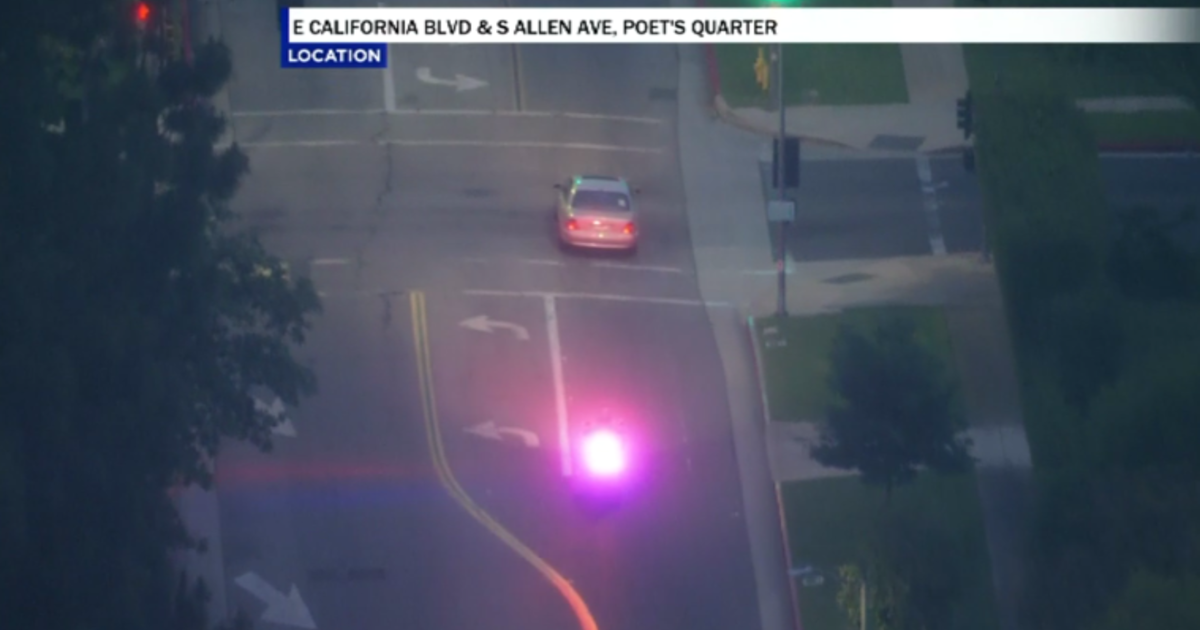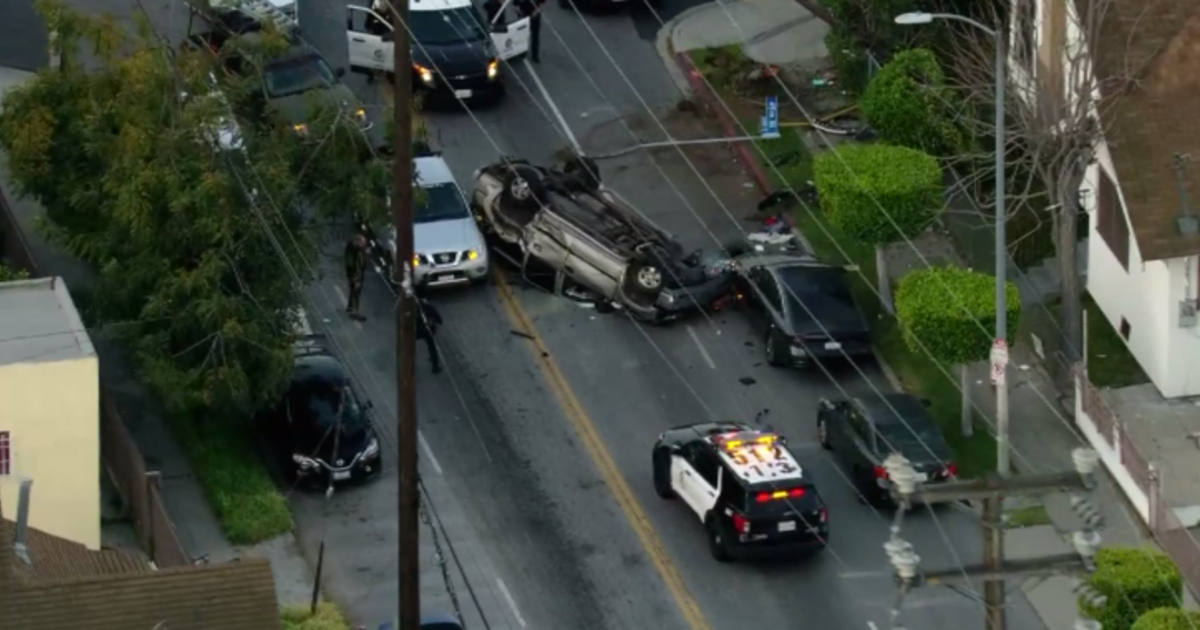Some Convicts Getting Out Early With No Monitoring
TUSTIN (AP) — Part of California's transformative prison realignment law was intended to give prosecutors and judges sentencing flexibility: Some convicts could receive a combination of custody and supervision, an approach favored by the state, while others could escape probation in exchange for serving longer sentences.
Figures reviewed by The Associated Press show many counties are doing what Gov. Jerry Brown had hoped they would not do by sentencing the overwhelming majority of convicts to the longer jail terms, or so-called straight time. Because of jail overcrowding, some are getting out well before they should and then receive essentially a free pass because they cannot be supervised under the terms of their sentence.
Local law enforcement agencies and probation officers worry that they have no way to track these felons as they re-enter the community, frequently after serving very little time in county jail.
"There's no follow-up, no treatment services, no nothing," said Michelle Scray, the chief probation officer in San Bernardino County. "It's a community protection issue, and it's got to be addressed."
The Democratic governor and state corrections officials hoped that county prosecutors and judges would opt more frequently for the jail-and-supervision combination, or split time, offered under the two-year-old realignment law. They saw the shorter sentences as a way to reduce inmate populations in county jails and the immediate follow-up as a way to better integrate felons back into their communities.
Yet just 31 percent of county convicts have received those split sentences, while more than two-thirds have received sentences that do not include any supervision upon release, according to the most recent data compiled by the Chief Probation Officers Association of California. The numbers cover October 2011, when the law went into effect, through September 2012 and are the latest available.
The numbers vary from county to county, with some counties in Northern California sentencing the majority of realigned inmates to a split sentence. But a number of heavily populated Southern California counties are shying away from that option, helping skew the statewide numbers.
In Los Angeles County, which has far more inmates than any other county, just 5 percent of inmates sentenced under the realignment law are being supervised after their release.
As of now, it's virtually impossible to track county-to-county which inmates are getting out before serving their full time and without post-release monitoring, but officials are working on a system to do that.
The 2011 realignment law shifted responsibility for thousands of prison inmates convicted of non-sexual, non-violent and non-serious offenses to counties rather than the state. It was Brown's main way of complying with a federal court order to reduce severe overcrowding in the state's 33 adult prisons.
As the law is written, inmates whose sentences do not include supervision are supposed to serve longer terms. Those longer sentences were intended as an inducement for convicts to seek plea agreements for the split sentences, which would allow them to participate in the post-release rehabilitation programs that are the bedrock of the state's new criminal justice approach.
The early reports show that is not happening, in part because prosecutors and judges want convicts they view as hardened criminals to serve longer sentences. Yet in many counties, overcrowding in the jails means those inmates get out months earlier than they should.
That counteracts the law's intent, said Lenore Anderson, director of Californians for Safety and Justice, a nonprofit that studies ways to increase public safety while reducing criminal justice costs.
"That post-release period is really critical when you're talking about reducing recidivism. That 18-month window is the most critical time to make sure a person doesn't go back to committing crime, and the split sentence approach is in line with that," she said. "We think there's a real opportunity being missed here."
State Assemblyman Tom Ammiano, D-San Francisco, has introduced a bill that would require that all offenders sentenced to county prison terms receive at least six months of community supervision.
Jeffrey Callison, a spokesman for the California Department of Corrections and Rehabilitation, said split sentencing is an important part of the reform-minded aspect of the realignment law.
"It certainly was the hope of the governor and the Legislature that local criminal justice agencies would take full advantage ... of those reforms, and that's happening in some places and not in others," he said. "But if all the counties were to go with it, it could really have a big impact."
One case often cited by split sentencing advocates is that of Larry Darnell Bishop.
A convicted felon, Bishop was released early from San Bernardino County jail without supervision. He was arrested five months after his May 2012 release for a shooting that killed a beloved Pasadena youth sports coach.
Bishop had moved to Pasadena, 60 miles away, after his release, but probation officers had no right to track him, said Chris Condon, a spokesman for the San Bernardino County probation department.
In that county, 82 percent of convicts who would have been sent to state prison before realignment are being released without supervision, Condon said.
"This is an example of something happening in the system that never would have happened before," he said. "You can choose a straight sentence, and you can walk right out the back door of jail without any supervision whatsoever."
Of the 2,500 cases monitored by probation officers in the high desert region of San Bernardino County, just 20 are inmates who received a split sentence under realignment. On a recent night, probation Officer Marshawn Etchepare arrested parolee Kenneth Lucas for the second time in four months after he was released just 60 days into a six-month sentence.
By his own estimate, Lucas has done nine prison stints and 15 swings through county jail, mostly on parole violations. Etchepare said she believes felons such as Lucas would be less likely to reoffend if more of them received post-release supervision by local officers.
"If we slap them on the hand and let them go all the time, they have no reason to get better," she said, after handcuffing Lucas. "I'm sure we'll be out here again soon. Same thing, same routine as last time."
It's not clear what is behind many counties' hesitancy to use split sentences, but judges point out that 97 percent of cases end in a plea deal worked out by the prosecutor and defense.
Some district attorneys are hesitant to apply a split sentence because they view it as essentially probation for inmates who, before the realignment law, would have been doing hard prison time.
The offenders who wind up being eligible for a split sentence already have been deemed too dangerous for probation, said Los Angeles County Judge Jim Brandlin, the assistant supervising judge for the county's criminal division. And for those who are not, he prefers probation because he can hold the threat of custody time over their head for a much longer period if they fail, he said.
Jail overcrowding will mean some convicts who receive the straight-time sentences will be released early, but that cannot influence the sentencing decision in the court, said Joe D'Agostino, senior assistant district attorney in Orange County, where 26 percent of realignment sentences include supervised release.
"In our county, we're hanging in there with bed space. We're confident they're going to end up serving their time," he said. "Most of the time, our position would be, 'We want to get them the sentence they would have gotten before.'"
(© Copyright 2013 The Associated Press. All Rights Reserved. This material may not be published, broadcast, rewritten or redistributed.)



